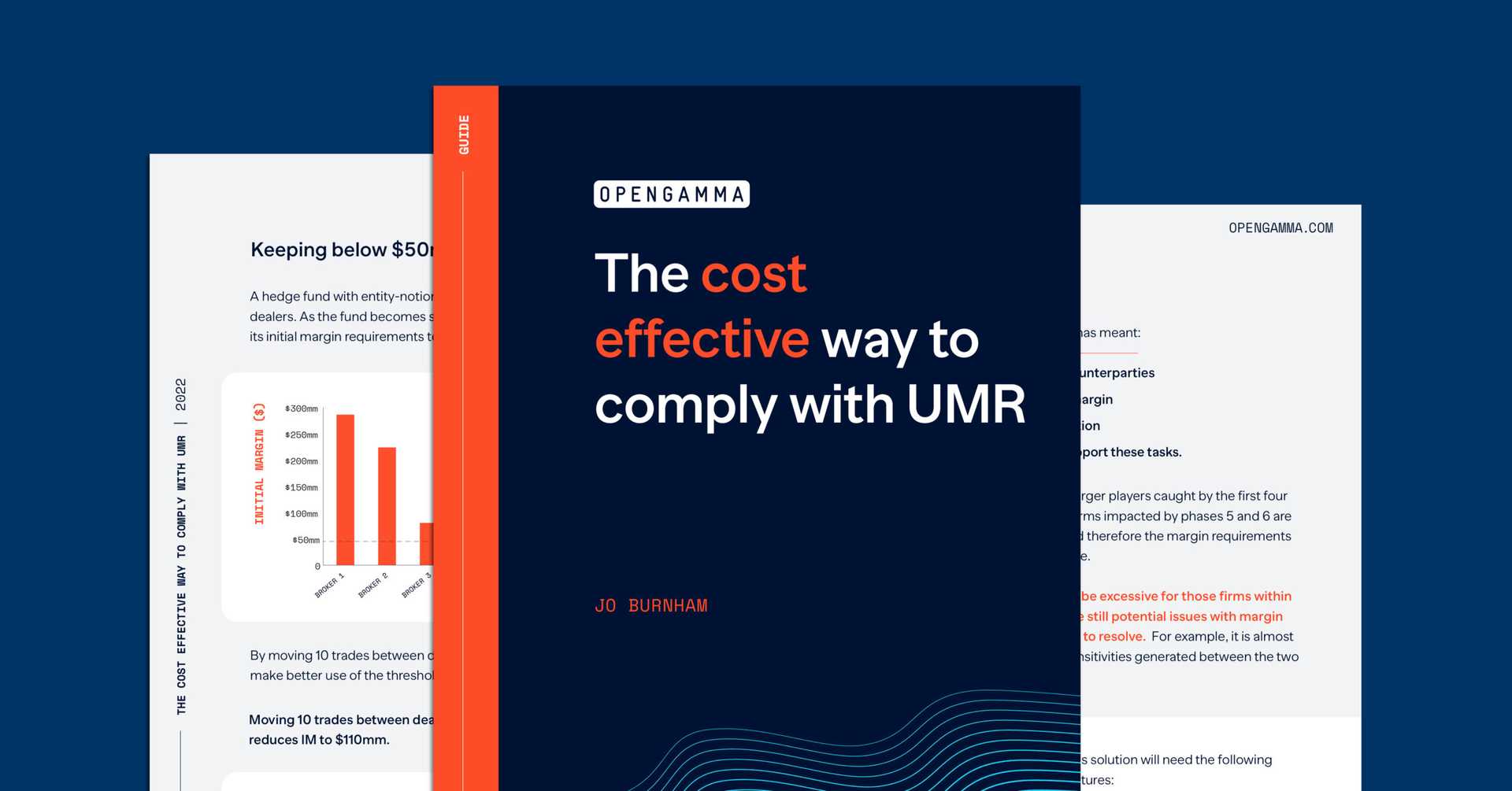One of the biggest challenges for firms newly impacted by the Uncleared Margin Rules (UMR) will be the need to backtest any internal model used for each firm to independently backtest the algorithm. Unfortunately, this regulation change is highly unlikely to be in place for the September start of Phase 5.
Therefore, if you are a firm that is in scope for Phase 5, then it is important to have an approach to this issue. Many firms will be busy enough already dealing with the implementation of margin calculation and validation. So the key thing here is how can you avoid implementing a full backtesting solution when the requirement to build this will hopefully be removed shortly after go-live.
What Do Regulators Say About Backtesting SIMM Margin?
The regulations have a few things to say about back-testing SIMM, which currently covers using anything other than Grid as the margin methodology:
- “the model incorporates methodologies used for back-testing which include statistical tests of the model’s performance”
- “ensure that the performance of the model is monitored on a continuous basis including by back-testing the model at least every 3 months”
- “back testing shall include a comparison between the values produced by the model and the realised market values of the non-centrally cleared OTC derivative contracts in the netting set”
Basically, every 3 months, until regulations change, it will be necessary to compare the calculated SIMM margin with the Variation Margin calculated and ensure that the number of breaches seen are within the number that would statistically be expected.
However, to ease the implementation of UMR, regulators are intending to take a lighter approach for entities that stay below the initial margin threshold:
The Basel Committee and IOSCO note that the framework does not specify documentation, custodial or operational requirements if the bilateral initial margin amount does not exceed the framework’s €50 million initial margin threshold. It is expected, however, that covered entities will act diligently when their exposures approach the threshold to ensure that the relevant arrangements needed are in place if the threshold is exceeded.
It can be assumed that this would also include back-testing of any initial margin.
What Should You Do To Avoid Backtesting SIMM Margin?
The simplest way to avoid back-testing SIMM is to use Grid for Initial Margin calculation. This may not be as bad as it sounds, especially if you have a long dated or directional portfolio. If that is the case, then it is quite likely that the margin calculated will actually be lower under Grid than SIMM.
Another thing to remember is the $50 million (or equivalent) threshold. In general, it is only new trades that are in scope of UMR so it may actually take you a while to get near that level of margin. And hopefully, by the time you do, the regulators will have got round to removing the obligation for back-testing SIMM.
If you do find your margin getting close to that $50 million threshold, then another option is to consider optimising your margin by moving some trades from bilateral to cleared. This could have the double benefit of keeping your margin under UMR below the threshold, while at the same time reducing margin for cleared OTC.
But just in case you do end up having to back-test your SIMM margin calculation, make sure that you keep all the necessary data. That means keeping a history of the daily margin calculations as well as the daily valuations.
Conclusion
Hopefully the requirement to back-test SIMM will be removed soon. It is in the regulators’ interests to do this, otherwise they will need to validate the results of all the firms conducting back-tests.
In the meantime, make sure you have a solution that can calculate optimal margins for your bilateral portfolio under UMR:
-
Grid – if you use this you won’t need to back-test
-
SIMM – make sure you can monitor if you are getting close to the $50 million threshold
-
Cleared – it is useful to be able to assess the impact of moving positions to cleared and keeping margin below the $50 million threshold
And finally, make sure you keep the data – Initial and Variation Margin. Having the ability to run a back-test is a good thing anyway – checking the Initial Margin you’re collecting from counterparties is sufficient to cover potential losses.




